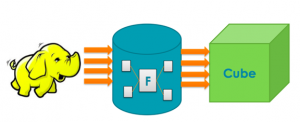Connecting SQL Server and Analysis Services to Hadoop Hive
Hadoop is a pretty neat set of tools for processing loads of data in a distributed, parallel and easy to scale-out manner, and so rightfully the Hadoop toolset owns a pretty high position in the data analysis and BI game, and a must consider when embarking on any new big data project. But that being said, the Hadoop eco-system, however advance in many areas, is still away from being a complete end to end BI solution, particularly when it comes to offering support for emerging data analysis and business intelligence concepts, such as exploratory data analysis and real-time data querying, or even fully-integrated data visualization and report authoring tools.







